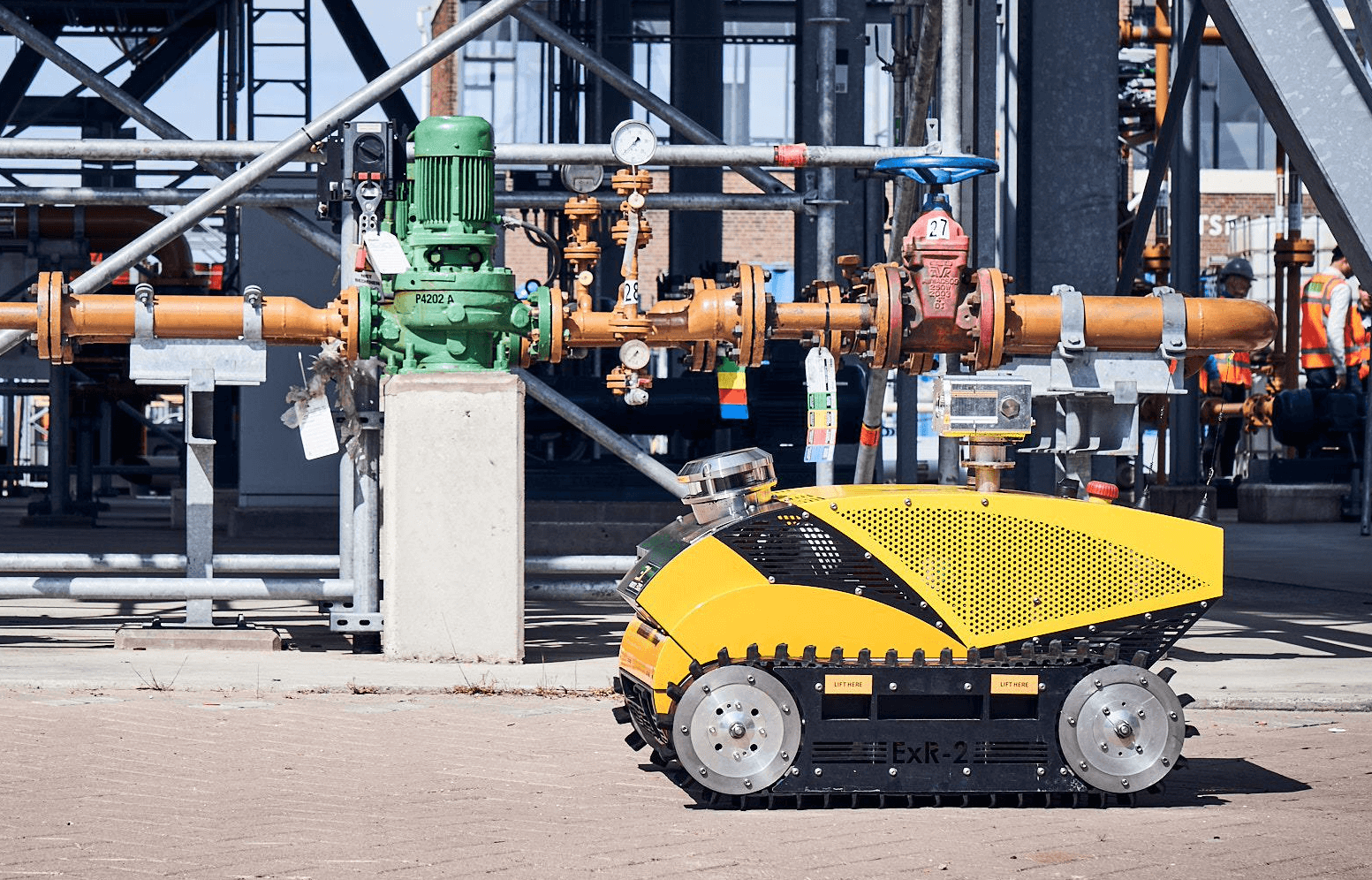Robots add renewed vigour to an ageing workforce by allowing their human team-mates to focus on high value tasks.
An increasingly ageing population poses distinct challenges for many countries around the world. This article focuses on what role robotics plays in bridging the ‘demographic gap’ in the workforce and, in particular, robotic inspections in capital-intensive industries. Advancements in robotic technology and increasing affordability mean that robots are not just mere tools, but catalysts that can help ageing countries navigate the looming demographic crisis.
Demographic Crisis across the Globe
Several countries around the world are suffering from years of low birth rates and declining population numbers, leading to ageing societies and a declining workforce. The European Union (EU) has seen its median birth rate plummet from 2.5 in 1960 to just under 1.6 in 2019. That’s a far cry from the replacement rate of 2.1 required for developed countries to maintain their population in the long-term (without migration).
Japan’s ageing statistics are even more alarming: as of 2019, the country has experienced nine consecutive years of net population decline, whilst the number of people over the age of 65 has doubled between 2000 and 2020. Even China, the world’s most populous country, is facing a demographic wall. In 2021, China saw its lowest population growth rate since 1953 as its birth rate slumped to 1.3, a rate on par with rapidly-ageing countries such as Japan and Italy.
An ageing population entails an inevitable decline in the workforce, with key sectors bearing the brunt of this attritional crisis.
"From nursing care and climate technicians to logisticians and academics, there will be a shortage of skilled workers everywhere."
Detlef Scheele, Federal Labor Agency Chairman-Germany
Demographic Crisis in Key Sectors
The ageing population has hit the skilled, manufacturing, and high-tech jobs the hardest. In the United States, the oil and gas industry has been experiencing the ‘demographic crunch’ since a decade, as many of its highly skilled workers will be leaving the workforce in the next 10 years. The United Kingdom will be experiencing a shortage of 36,800 qualified engineers by 2050. While Germany is already experiencing an economy-wide skills shortage due to demographic factors. It will need to attract at least 400,000 skilled immigrants a year to maintain current economic growth.
The bleak demographic data from countries across the world makes it crystal clear: we are well and truly running out of humans in many sectors. However, it’s not all doom and gloom.
Robotics to the Rescue
A study, titled Demographics and Automation, found that ageing workforces lead to greater uptake of robotics and industrial automation. Japan and South Korea embracing robotic technology is a case in point. As seen in the role of robotics in Japan’s demographic context, it not only plugs the demographic gap in ageing countries, but it is also economically beneficial. The competitive edge for Japanese companies, spurred by high robot use, has kept Japan’s GDP high despite its worrying demographic situation.
Following the Japan model of automation, other countries battling a shortage of middle-aged workers in skilled manual jobs are also adopting robots to automate manual tasks. One such manual task which autonomous robots are already revolutionising is industrial inspection.
A Shining Example: Robots Revolutionising Industrial Inspection
Robots are increasingly being deployed to carry out inspection tasks in capital-intensive industries such as Oil & Gas, Chemical, Power & Utilities. They are not only supplementing a declining workforce, but they are also enabling humans to perform safer and more fulfilling roles, instead of tediously inspecting assets in dangerous environments.
Manual inspection involves humans deployed in potentially dangerous environments, carrying out dull and repetitive tasks, which entail waning attention spans leading to errors with drastic consequences. These range from increased unplanned downtime to serious workplace accidents. It has been estimated that a large portion of these accidents in the oil and gas industry are due to human error.
Robots, on the other hand, are perfectly suited for routine tasks that need to be performed frequently. Equipped with powerful sensors, robots reliably collect high quality data and consistently deliver actionable insights on asset integrity. Furthermore, the wide range of robots available today provide industries with the option of deploying "specialist" robots in offshore, out-/in-door, multi-floor and potentially dangerous environments, thus reducing human exposure and increasing worker safety.
Sounds great, but what are the costs?
Robotic inspections are cost-effective. An ad-hoc assessment of the savings rendered by automating inspection shows us how: if an engineer undertakes an inspection at, say, a gas facility at 100€ per hour, then an autonomous robot can do the same (more accurately) for 50€ per hour. That’s a 50% reduction in cost compared to manual inspection. What about the use of stationary IoT sensors as an alternative to robotic inspection? Given the sheer number of such devices required in a typical industry, it is economically prudent instead to have a single robot that can read numerous devices and inspect every corner of an industrial plant.

There are a number of other benefits that autonomous robotic inspection yields beyond inspection thoroughness, worker safety, cost and time efficiencies. These include ensuring overall plant safety (due to the reduction of the risk of accidental explosions or fire), being able to operate in hostile or remote locations, and in inclement weather conditions.
In conclusion, robotic technology, such as autonomous industrial inspection, not only plugs gaps, but adds renewed vigour to an ageing workforce. The exponential advancement of robotics has transformed robots from mere machines to team-mates that add value immediately. Instead of putting people out of jobs, robots take over dull and undesirable tasks, freeing workers to perform more fulfilling work. As shown by Japan and South Korea, the cornerstone of an ageing, yet productive and happy workforce is the cooperation between humans and robots. After all, we are on the same team.



.jpg)

.jpg)

